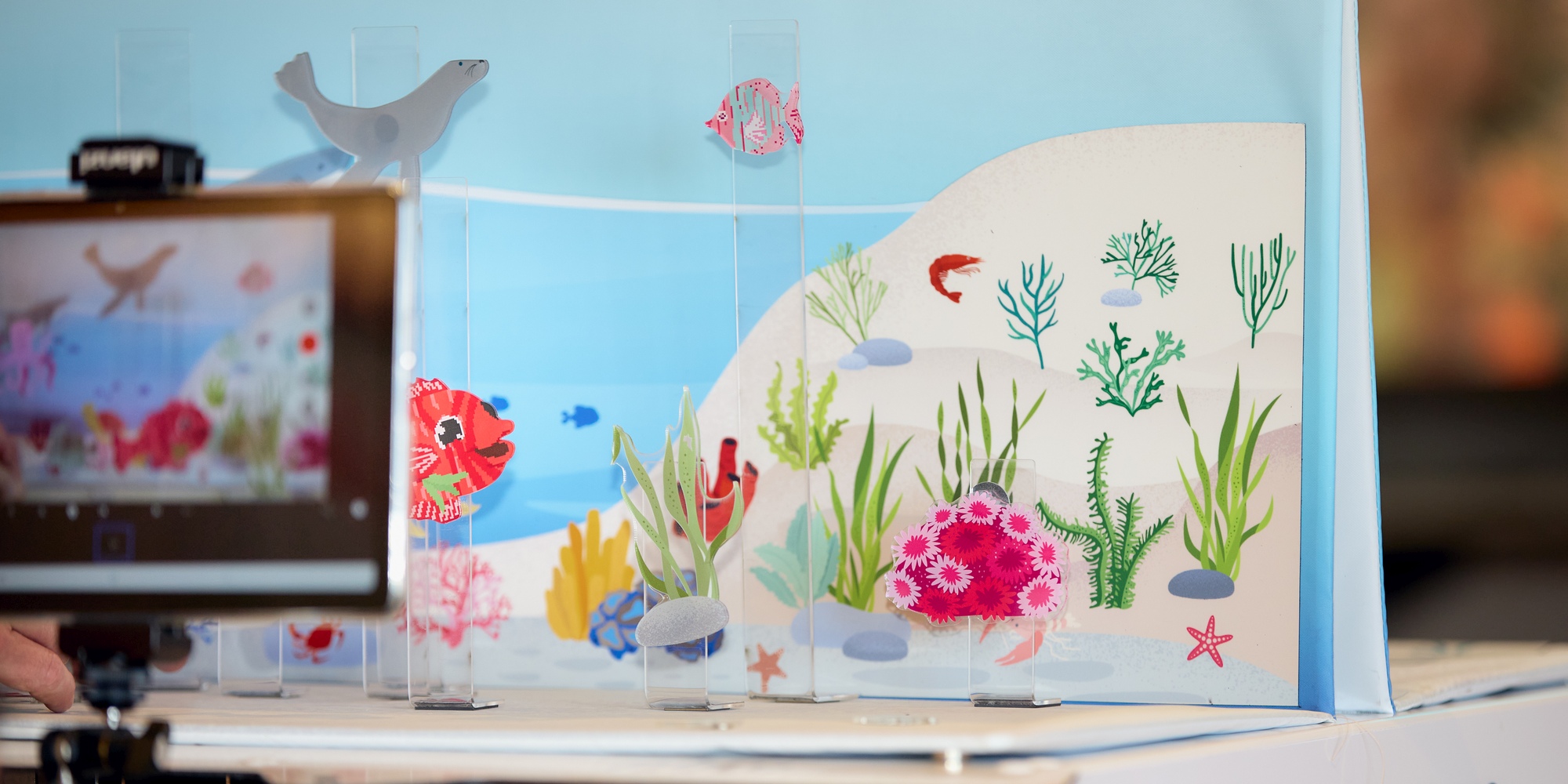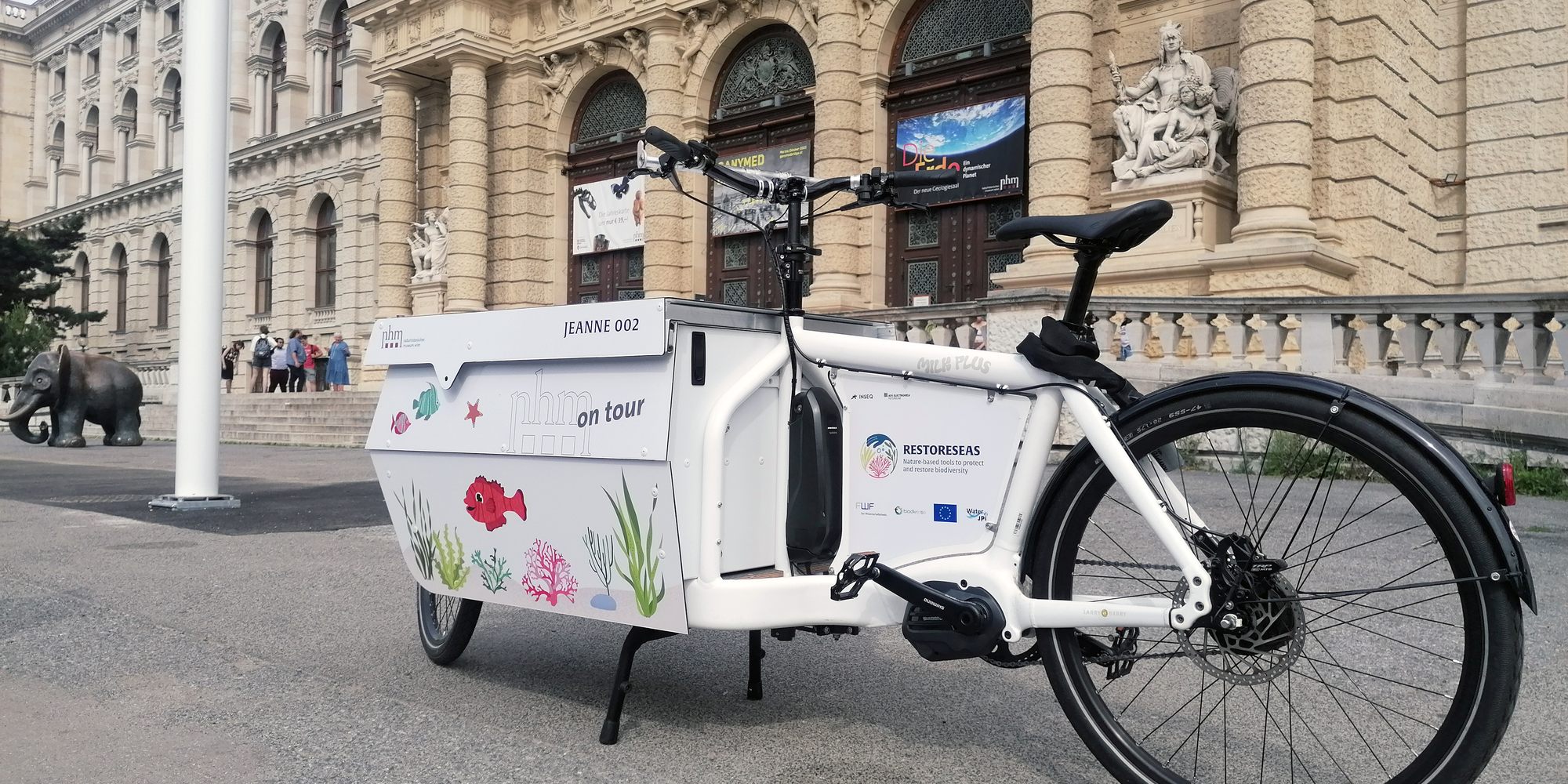The Coral Bike is a mobile workshop by the Natural History Museum Vienna that focuses on the importance of and threats to marine forests. The e-bike makes stops in urban parks, where it becomes a mobile learning space for 5th to 8th grade classes: with hands-on science.
The Coral Bike was created as part of the international project “RESTORESEAS” which deals with the restoration of marine habitats across borders. The clever design – developed and implemented by Ars Electronica Futurelab and Inseq Design – not only offers space for all workshop utensils but can also be folded out and converted to offer different workshop experiences.
The Coral Bike is the second edition of “NHM on tour”: with this series of interactive cargo e-bikes, the Natural History Museum Vienna is leaving the museum context and making knowledge transfer mobile. The first museum e-bike, also developed by Ars Electronica Futurelab and Inseq Design, has been on the streets of Vienna since 2020 and opens up new perspectives on the topic of light pollution.
Storytelling theater leads underwater
At first the students immerse themselves in the theme of marine forests by following the staged storytelling. The workshop leader takes them into the underwater world through narration, visually supported by a modern interpretation of the Japanese “Kamishibai” (Japanese for “paper theater”). Kamishibai is a traditional form of Japanese street theater and storytelling in which storytellers go around on bicycles and bring stories to life by changing pictures in a miniature stage.
The Coral Bike’s storytelling theater can be placed on the handlebars and, with the help of cranks, becomes an analog, moving presentation format. It consists of two moving layers: A horizontal and a vertical track made of printed transparent foil. This layering of two directions of movement results in different narrative forms and narrative strands.
Independent learning and becoming active
In the second part of the workshop, the participants go on an independent exploration tour through the park, guided by a mobile web app. Step by step, the web app guides them through the content and incorporates the park as a living-learning space. Varied content, interactive tasks, quizzes, and the use of different media support independent learning. The web app not only imparts knowledge but also encourages students to become active themselves, share opinions, and make a contribution.
In the creative section of the workshop, the students become storytellers themselves. They create lively stories that communicate important messages about the protection and conservation of marine habitats. Using stop-motion boxes that fold out from the bike, the stories become animated films. With a variety of elements and characters that can be placed and animated in the stop-motion boxes with magnets, there are no limits to creativity.
Credits
Ars Electronica Futurelab: Susanne Kiesenhofer, Stefan Mittlböck-Jungwirth-Fohringer
Naturhistorisches Museum Wien / RESTORESEAS: Pedro Frade, Maria Pinto, Iris Ott
Inseq Design: Jakob Illera






